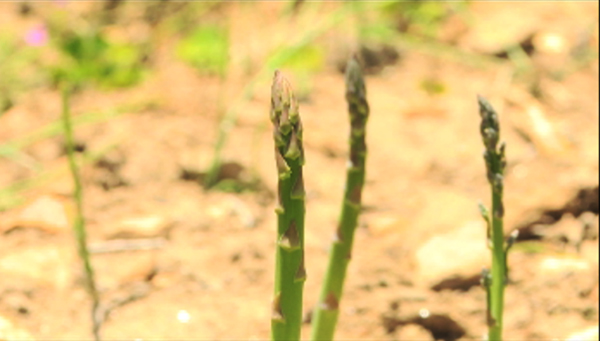 The focus is shifting. An increasing number of farmers in Paro and Thimphu are growing other crops in their paddy fields. And this, according to experts, has led to a decrease in the area used for rice cultivation adding pressure on the country’s target of achieving rice self-sufficiency.
The focus is shifting. An increasing number of farmers in Paro and Thimphu are growing other crops in their paddy fields. And this, according to experts, has led to a decrease in the area used for rice cultivation adding pressure on the country’s target of achieving rice self-sufficiency.
It is the paddy transplantation season. But these days, it is not uncommon to see some paddy fields covered with other crops, those that fetch better income; for example, asparagus.
51-year-old Gyeltshen from Drugyaldingkha in Sharpa Gewog is among the many farmers who switched to growing asparagus in some of their paddy fields. He accepts farm mechanization has made paddy cultivation easier. The yield has improved as well. Nevertheless, he is quick to add that the returns are better from asparagus. And so, 12 years have passed growing the crop.
“For example, the maximum we can earn by cultivating rice in a plot of 25 decimal land would be Nu 10,000. On the other hand, we can easily make Nu 25,000 if we grow other crops in the same plot.”
He says it requires hard work in growing asparagus, but just once. Farmers enjoy the harvest for up to three decades with each season lasting for a few months.
Like Gyeltshen, most of his fellow villagers cultivate asparagus in their paddy fields today. According to the district administration, the total area of land under asparagus cultivation in Paro increased to over 100 acres in 2018 from 78 acres in 2016.
“Growing asparagus and cucumber is profitable because the yield is better. Just as spring begins, it is the asparagus that grows first before any other cash crops. We sell the first harvest to our regular buyers. They pay us Nu 250 for a bunch of asparagus. The price doesn’t fall below Nu 100,” said Dawa Pem from Drugyaldingkha.
In the neighbouring district of Thimphu, the story is no different. The farmers of Maedwang Gewog are cultivating asparagus and chillies in mass in their paddy fields, a practice that is picking pace.
“It is easier to grow asparagus. It doesn’t require much water or get infested by pests. We started growing the crop instead of rice due to water shortage,” said Pelmo from Maedwang Gewog, Thimphu.
“If we cultivate paddy on a plot of 25 decimal land, I can harvest only around 225 kilograms of rice. Whereas if we plant chillies, we can make around Nu 50,000 just by selling chilli saplings and another Nu 100,000 selling the spice,” added Yangchen Dema.
“Farmers here started growing chillies in some of their paddy fields a few years ago. With Thimphu’s increasing population, the income from it increased as well. Nowadays, each household grows chillies in at least two to three plots of land,” said Rinzin, Maedwang Gewog’s Mangmi.
According to the agriculture and forests ministry, at the moment, the change in farming practice has not affected the country’s rice production. For example in Paro, despite the decrease in cultivated land, rice production increased by more than 600 kilograms per acre between 2016 and 2018.
“To encourage farmers, we are still providing subsidy on farm machinery. We are also providing them with low-interest rate loans from the National CSI bank. Similarly, we are giving them seeds that give better yield and helping in managing human-wildlife conflict, which affects rice production” said agriculture minister Yeshey Penjor.
Nevertheless, the ministry is wary of the consequences if more paddy fields are converted for growing other crops. It would leave the national goal of achieving rice self-sufficiency at risk. Today, the country is 37 per cent self-sufficient in rice and so, the cereal remains among the top 10 food items imported annually.
Moreover, with changing climatic conditions, water is becoming a scarce resource. This, according to the agriculture and forests minister, makes the task of achieving the goal even more challenging. Against this, the minister recommends growing more climate-resilient crops and changing dietary habits.
“We have to grow other crops that do not require much water. Also, we need not necessarily eat rice in every meal. If we reduce our rice intake to twice a day, the sufficiency rate will increase to 70 per cent. If we can reduce it to once a day, we will be able to achieve 100 per cent sufficiency in rice.”
For now, what remains to see is how willing the Bhutanese are to cut down on their rice consumption, which has been a staple diet since time immemorial.
Meanwhile, back in Paro, Gyeltshen and his fellow villagers have almost finished harvesting their asparagus plants. It has been a good season. They will leave the fields fallow as they wait for the plants to regrow the next season and beyond, with the least efforts involved.
Phub Gyem





